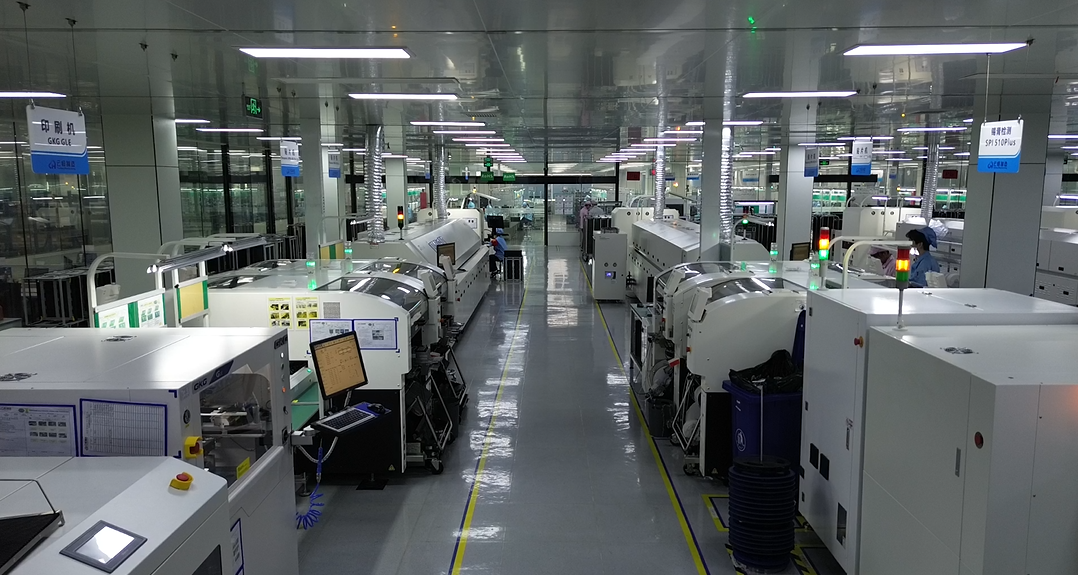WhatDoesaSMTFactoryDoKeyRolesandDailyTasks
Core Functions of a SMT Factory
A surface-mount technology (SMT) factory specializes in assembling electronic components onto printed circuit boards (PCBs). This process involves placing tiny components like resistors, capacitors, and integrated circuits onto designated spots on PCBs using automated machinery. The factory’s primary role is to ensure precise, efficient, and high-volume production of electronic assemblies for devices ranging from smartphones to medical equipment. Workers collaborate to transform raw materials into functional boards that power modern electronics.
Component Preparation and Inventory Management
Before assembly begins, the factory manages the intake and storage of components. Staff verify shipments against purchase orders, inspect parts for damage, and organize them in climate-controlled storage areas. Inventory specialists track component quantities, expiration dates, and batch numbers to prevent shortages or delays. Proper handling of moisture-sensitive materials, such as sealing them in dry packaging, is critical to avoid damage during storage.
PCB Loading and Machine Setup
Operators load reels of components into pick-and-place machines, ensuring correct alignment with the PCB design. They program equipment using CAD data to match component placement coordinates and adjust feeders to handle different part sizes. Technicians calibrate machines regularly to maintain placement accuracy within microns. This stage requires attention to detail, as incorrect setups can lead to misaligned parts or production stoppages.
Solder Paste Application Process
Using stencil printers, workers apply solder paste to PCBs in precise patterns matching the component layout. Operators monitor paste viscosity and stencil alignment to prevent issues like smearing or insufficient coverage. Regular cleaning of stencils ensures consistent print quality. Quality checks at this stage include measuring paste thickness with laser scanners and verifying pattern accuracy through sample inspections.
Automated Component Placement
High-speed placement machines install components at rates exceeding 30,000 parts per hour. Operators oversee this process, troubleshooting issues like component misfeeds or vacuum nozzle errors. They maintain component reels, replace depleted feeders, and document placement rates. Vision systems on the machines verify part orientation and placement accuracy before boards move to the next stage.

Reflow Soldering Operations
After component placement, boards travel through reflow ovens where carefully controlled heat profiles melt solder paste to create permanent connections. Technicians monitor temperature zones and conveyor speed to prevent defects like cold joints or component warping. They analyze solder joint samples under microscopes and use thermal profilers to validate oven performance throughout production runs.
Quality Control and Testing
Quality assurance teams employ multiple inspection methods. Automated optical inspection (AOI) systems scan boards for missing components or soldering defects. X-ray machines check hidden connections under chips. Functional testers verify electrical performance by simulating real-world operating conditions. Any failed units undergo root cause analysis, with findings used to adjust processes and prevent recurrence.
Rework and Repair Procedures
Specialized technicians address boards that fail inspections. Using micro-soldering tools and magnification equipment, they replace faulty components or repair solder joints. This requires steady hands and knowledge of component specifications. All reworked boards undergo retesting to meet original quality standards. Detailed logs track repair history for each assembly.
Packaging and Shipping Preparation
Completed boards undergo anti-static packaging based on customer requirements. Workers apply protective coatings when specified and label packages with handling instructions. Shipping teams coordinate with logistics providers to ensure timely delivery while maintaining proper storage conditions during transit. Inventory systems update automatically to reflect completed orders and remaining stock levels.
Equipment Maintenance and Upkeep
Preventive maintenance keeps production lines running smoothly. Mechanics lubricate machine parts, replace worn components, and update software. They maintain service records and perform calibrations using certified tools. Downtime schedules are coordinated with production managers to minimize impact on deadlines. Emergency repair teams remain on standby to address unexpected equipment failures.
Workforce Training and Safety
New employees complete extensive training on ESD protection, machine operation, and quality standards. Regular workshops update staff on new components and assembly techniques. Safety officers conduct audits to ensure proper use of protective gear and compliance with handling procedures for hazardous materials like solder alloys. Emergency drills prepare teams for scenarios like chemical spills or equipment malfunctions.
Customer Collaboration and Custom Orders
Engineering teams work closely with clients to optimize designs for manufacturability. They suggest component substitutions for better availability or propose layout changes to improve assembly efficiency. Prototype departments build pre-production samples for customer testing, incorporating feedback into final production plans. Project managers maintain constant communication to address specification changes or urgent deadline adjustments.
Documentation and Process Optimization
Detailed records track every production batch, including machine settings, component lots, and test results. Analysts review production data to identify efficiency improvements, such as reducing solder paste waste or optimizing component loading sequences. Continuous improvement programs encourage workers to suggest practical enhancements to workflows or quality checks.
